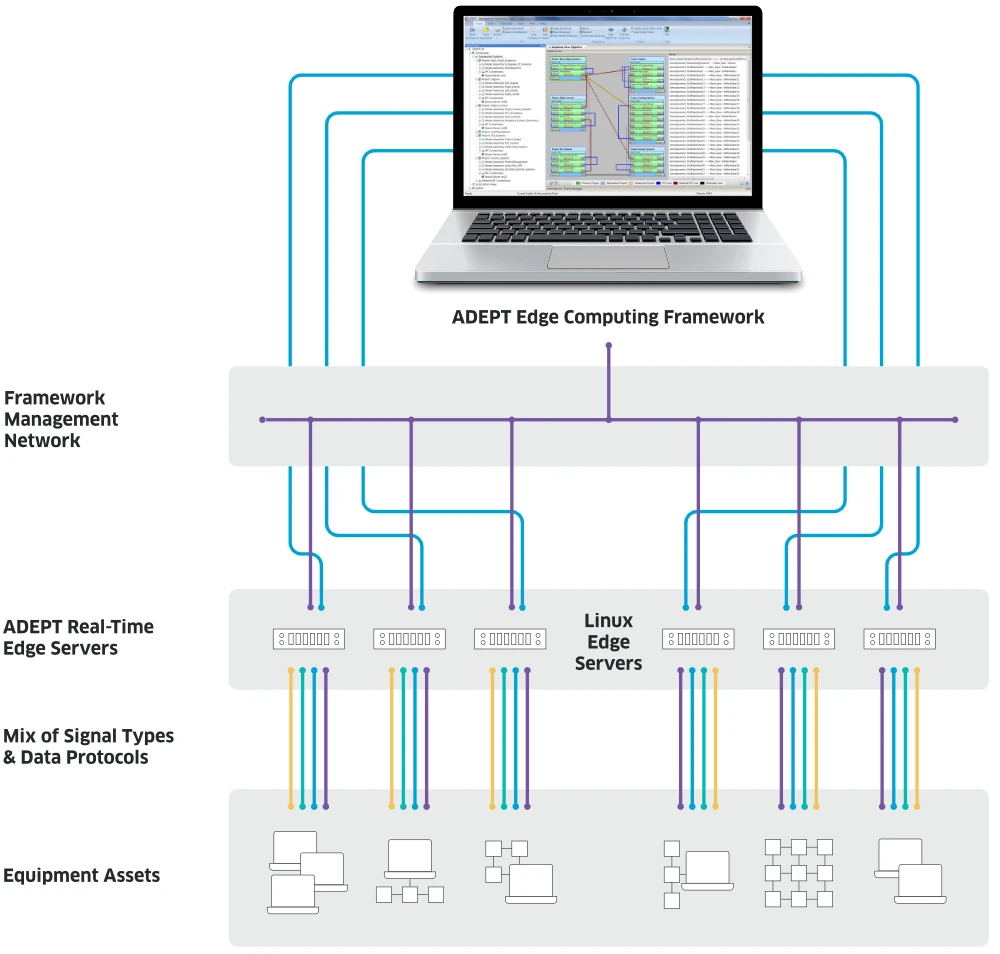Aerospace and Defense Edge Computing Frameworks
Real-time edge computing frameworks are a crucial tool in aerospace and defense system testing, employing a model-based systems engineering approach to facilitate seamless data and signal connectivity among algorithms, equipment, data protocols, and human operators.
Real-time edge computing frameworks provide a flexible digital engineering tool for the testing of aerospace and defense systems, as part of a model-based systems engineering (MBSE) methodology. An edge computing framework allows for plug-and-play data and signal connectivity between algorithms, equipment, data protocols, and humans.
Real-time edge computing naturally leverages a client-server architecture, where time-critical tasks and data transmissions are handled by one or more real-time servers, potentially as part of a distributed edge computing framework, and; where client PC’s are used for non-time-critical functions, such as framework maintenance, data archive transfers, interactive analysis, etc.
Data Dictionaries & Servers
All data from the framework is made available through data dictionaries, and the framework operates in either real-time (real-time testing) or virtual, non-real-time clock-synchronized mode of execution (virtualized and parallelized testing). Frameworks are deployed to edge servers, providing connectivity with the physical world, and most importantly, providing functions that give a return on investment.
Frameworks are run using standard edge servers and PXIe industrial computers. Data (Ethernet, serial, etc.) and signal (analog input, analog output, digital input, digital output, specialized output waveform, specialized signal measurement, etc.) interfacing is handled using standard I/O cards supplied by popular commercial industrial computer equipment vendors.
Real-time frameworks are used to implement complex test environments where simulation, specialized test equipment, humans, and complex aerospace and defense systems are connected together to perform dynamic testing, with a high level of automation. Increasingly, a significant portion of the complexity found in innovative aerospace and defense systems lives in the system databus (ARINC-429, MIL-1553, RS-422, etc.) and networks (ARINC-664, Modbus-TCP, Ethernet-IP, OPC UA). Distributed real-time frameworks are often the only effective tool for comprehensively testing these aerospace and defense networks.
Client-Server Distributed Framework
Lorem ipsum dolor sit amet, consectetur adipiscing elit, sed do eiusmod tempor incididunt ut labore et dolore magna aliqua. Ut enim ad minim veniam, quis nostrud exercitation ullamco laboris nisi ut aliquip ex ea commodo consequat. Duis aute irure dolor in reprehenderit in voluptate velit esse cillum dolore eu fugiat nulla pariatur.

